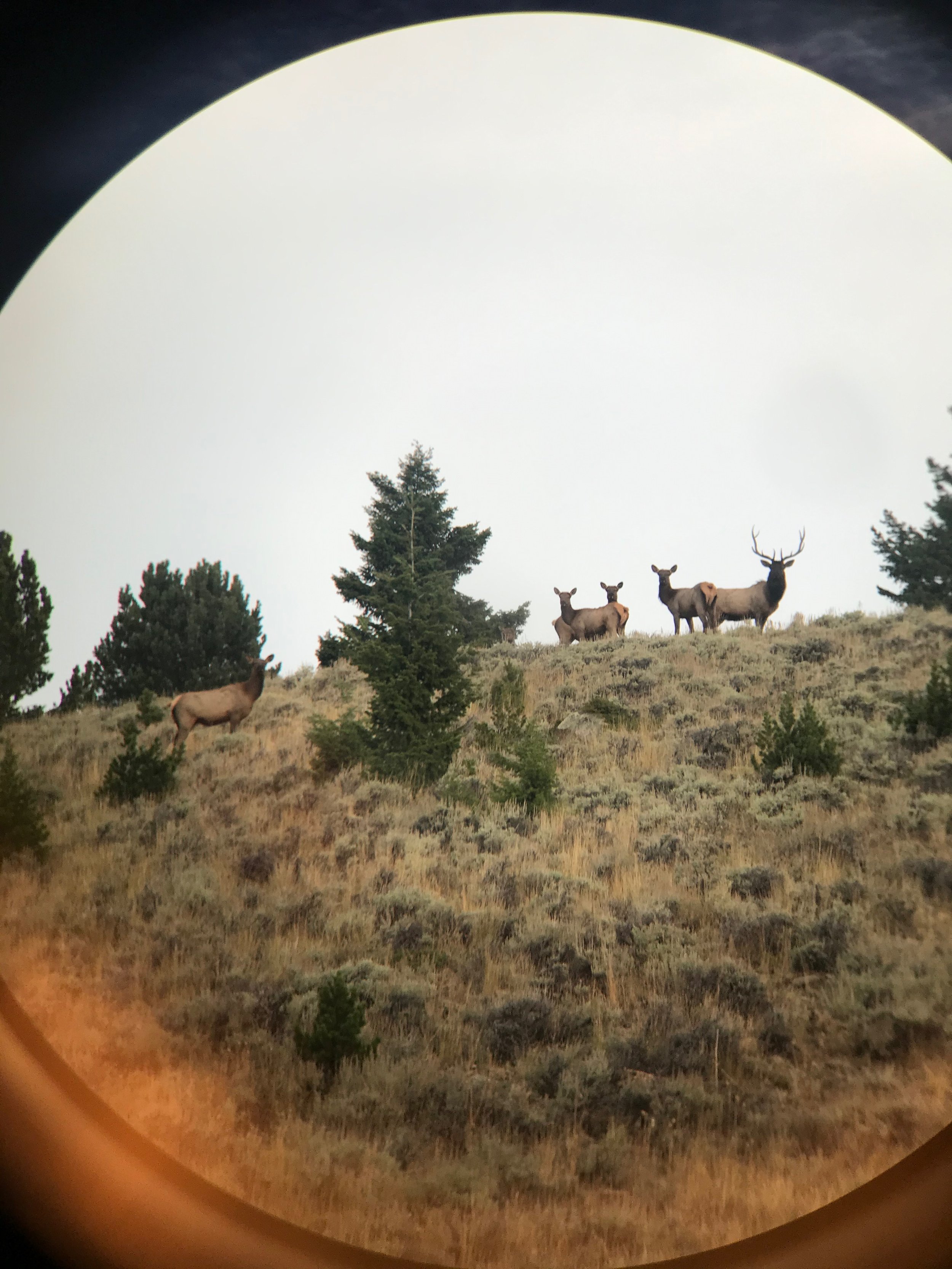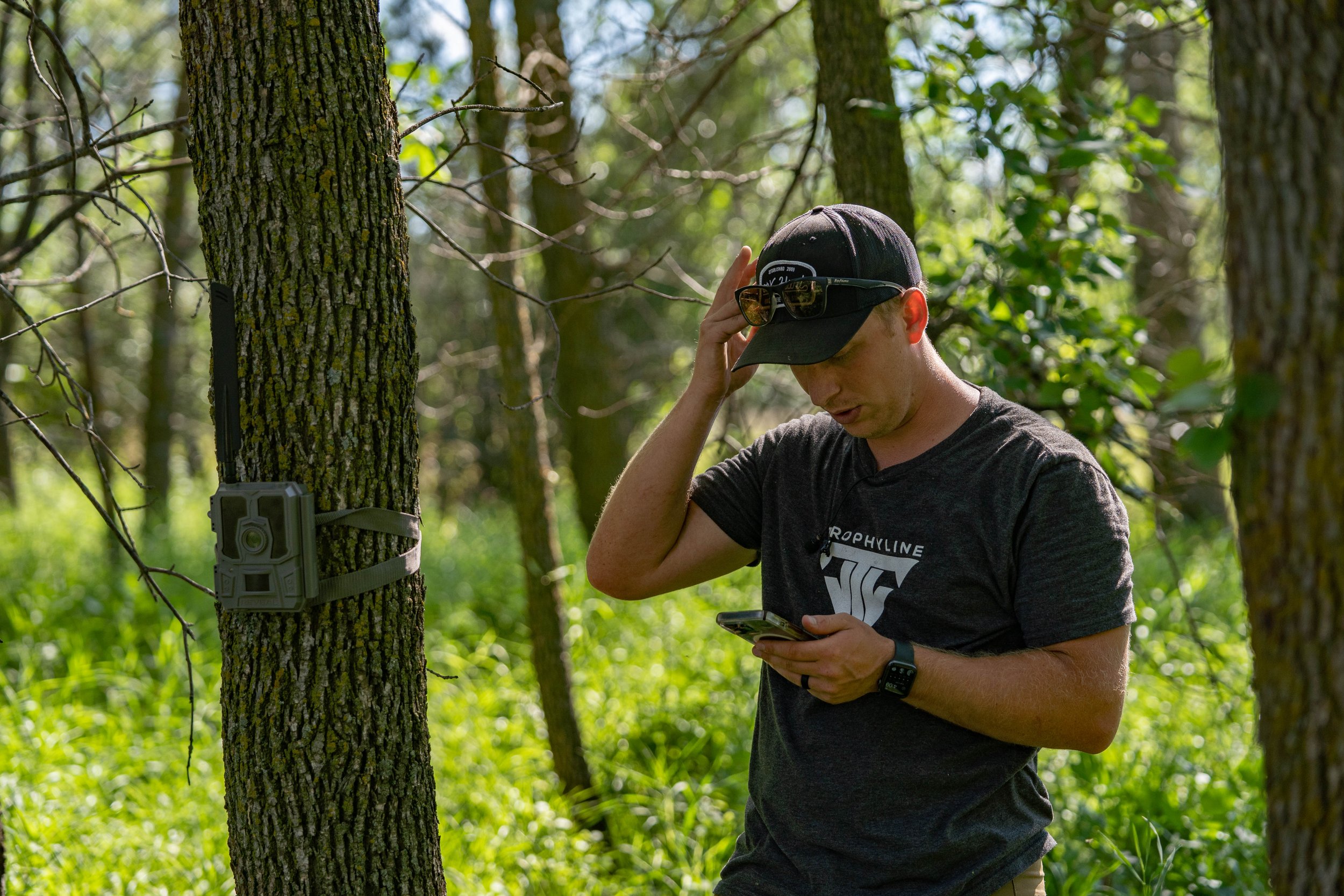By Alex Comstock
It’s crazy to me to think that in my neck of the woods, whitetail season has already been over for a month and a half. As I sit here in the middle of February, my mind is already racing and coming up with plans to make the 2023 whitetail season one of my best. The 2022 deer season was in large part one of my worst seasons ever and if you want to read more in depth on my 2022 reflection, you can HERE.
In this blog, I’m going to focus on this upcoming year and go over a month by month synopsis on what I’ll be doing to hopefully have more success than ever in 2023 and hopefully you’ll be able to glean some information from it that can help you as well.
January
January has obviously already come and gone, but I’m going to include it anyway. Let’s assume season ended for you at the end of December as it did for me. January serves as a “reflection” month for me. I look back at my season, review notes from the field and try to figure out where I went wrong and also what I did right. It’s an important month, because it can set the foundation for the rest of the year and how it goes.
February
February can to some sorts be an extension of January, but I start to turn my head towards more of planning rather than reflection. For instance, in the last few weeks I’ve spent a lot of time on OnX dropping pins and doing a lot of e-scouting. It’s kind of the time to mark up a ton of stuff where you may want to get boots on the ground throughout the year whether that be shed hunting or scouting.
Depending where you live and your given situation, it could also serve as the beginning of winter scouting and shed hunting. Up where I’m at in northern Minnesota, we are fully getting into the swing of this. A lot of bucks drop in late December and in January so we can start looking for antlers. If we’re not finding antlers though because of the snow, we are learning where bucks are spending their time right now, can make waypoints and come back throughout the spring to look for antlers. Either way, there’s stuff you can be doing in February.
March & april
March to me signifies the start of hardcore shed hunting and spring scouting. It’s what pretty much takes up my entire March and April. For a large majority of the midwest - if you are going to be shed hunting or partaking in spring scouting these are the months to get it done. You want to be doing both of these when the woods are most bare, free from snow or green up. These months can also be highly critical in possibly shaping how your season goes. From finding antlers to a buck that you were maybe wondering if he survived to possibly uncovering a hidden gem of a rut hunting spot due to spring scouting, by no means should you overlook these two critical months in the whitetail calendar.
*As an extra, I’ll throw in turkey hunting here. Though not necessarily part of the “whitetail” calendar, turkey hunting can most definitely help you become a better overall hunter, which can translate to your whitetail hunting abilities.
May & June
May and June signifies to me the start of my archery practice regimen. Now, let me be clear on this, you can most definitely be shooting your bow throughout the year and I do as well. In fact, this year I’ve joined a 3D archery league to help keep myself shooting. But, it’s not the same as when I kick it into gear in early summer for a couple reasons.
The first and biggest reason is that we currently have many feet of snow outside and shooting outside would simply just not be fun. Archery league is great, but I’m only shooting 25 arrows a round, once a week. When we finally get to the point of May and June, we’ll have our backyard range setup and hopefully I’ll be shooting 3/4 days a week and shooting a ton of arrows. It’s important to me to build up strength and establish any other sort of practicing such as practicing out of my saddle, etc.
This timeframe of the year also serves as a great time to start zeroing in on properties I want to ask permission to hunt. Every year I like to try and get more spots to hunt by permission and in May and June I’m marking spots I want to get permission on, I may drive by them if their in state and then by the end of June I’m doing my door knocking. I want to go into July with a good of an idea as possible where I will be spending my time hunting in the fall, or at least what I’ve got access to.
july
July is the start of summer trail cameras and is one of my favorite times of the year. I typically try and get as many cameras out as possible during the first two weeks of July, especially in state. Summer trail camera intel is great to start creating an inventory of bucks in the area through mineral sites and feeding (where legal).
Given that 99% of my hunting is done on public or by permission small pieces of property, our team can usually deploy our force of trail cameras over the course of a week or two. If you’re going to hang any treestands for “permanent” setups for the fall, while your back getting cameras up, this can be a good time to do that as well. I try not to make more trips than I need to into the timber this time of year because of how hot and buggy it can be, so knocking out multiple to-do’s in one trip is my way to go.
august
For me, August is the two tiered. We’ll even split it up into a first half and second half of the month. The first half of the month, I want to get any final tuning done with my entire hunting setup. This means gear, bow, clothes washed, if any trail cams need fresh batteries I change them out etc. It’s essentially the part of the year where I realize hunting season is right around the corner and I want to cross all my t’s and dot all my i’s. Hopefully by the middle of the month I’m ready to go because then it’s game time.
The second half of the month is dedicated to getting ready for early season hunting. For our team that typically means getting ready and heading out to North Dakota. Even if you don’t travel for an early opener, something that you can be doing is long distance observation. This works great for us in North Dakota because there’s ample opportunity for glassing bean fields, etc. If you’re able to get eyes on a buck doing the same thing multiple days in a row, you can capitalize on that in early September. As August comes to an end, that means it’s time to deer hunt and here’s a high level overview on my best steps for success and what I’m doing each month.
september
September is all about early season food sources. This can vary depending where you live/hunt, but I’ll quickly go over my scenarios.
In early September I hunt in North Dakota and the main food source out there is bean fields and wheat fields. Deer do like standing corn fields, but those are difficult to hunt when it’s standing early. In North Dakota, we are allowed to bait in the region we hunt, so that is sometimes something we deploy as well.
As we move into the later stages of the month, I key in on oak trees dropping acorns where I hunt in Minnesota. Given how far north I am, acorns are usually always dropping by the time season kicks off the third week of September. Depending on your location, keying in on oaks may be more of an October strategy.
october
October is yet another two tiered month. The first half of the month is often referred to as the “October Lull”, whereas the back half of the month you may begin to see some light rutting activity.
The first half of the month is no secret that it can be an extremely difficult time to kill a mature buck. You typically aren’t going to luck into it. But if you can get a bead on a mature buck through trail cameras or historical data, you can kill him. It’s often going to revolve around understanding where a buck is feeding and bedding, because they just aren’t going to move as much.
The second half of the month we start easing in to the “Pre-Rut”. You’ll see scrapes and rubs starting to litter the woods and testosterone is definitely starting to increase in bucks leading to November. Mid to late October I’m focusing in on scrapes but not just any scrapes. I’m looking for scrapes back in the timber close to bedding areas. Your best chance of a buck hitting a scrape in daylight isn’t going to be a field edge scrape that’s for sure. If you can locate scrapes closer to bedding areas and get a good cold front, that could be a killer combo to kill a late October buck.
november
November is all about the rut. Bucks chasing and breeding does and the woods being alive 24/7 is what most of us picture and hope for, but that’s seldom the case. The rut to me is all about grinding it out for that opportunity. You never know when it’s going to happen. You can have slow hunt after slow hunt and then out of nowhere the woods can explode. So overall to me, the rut is about being mentally strong and spending as much time in a tree as possible. Hopefully that will payoff in the end.
december
The final month in the whitetail calendar, and what I find to be the most overlooked. December is possibly the best time all year to kill a mature buck. Maybe I’m biased because it’s the month I’ve killed the most mature bucks, but what it ultimately comes down to is food and survival. Bucks are reeling after a long rut and need to get replenished before winter. If you can find the right food source, you can kill a mature buck, simple as that.


































